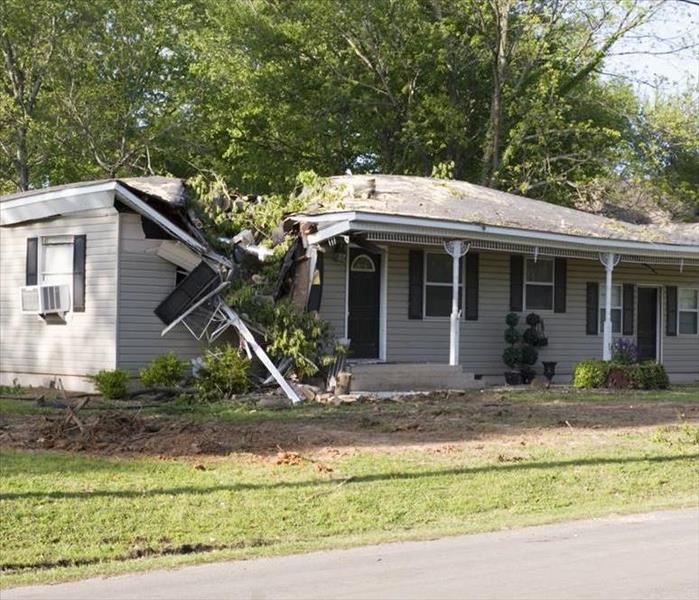What can really happen to your home after a storm
1/31/2020 (Permalink)
Lightning storms can occur anywhere in the U.S., and they bring the threat of fires and severe structural damage. Even if your lightning rods work properly by channeling the energy to the ground, it’s possible to see damage to electrical wiring, appliances, antennas, satellite dishes, cable or telephone lines, and steel framework. Unless there are signs of fire, be sure to stay indoors until the storm is over because your home will protect you.
Thunderstorms come with risks even if you aren’t hit by lightning. You could see dangerous flash flooding, hail and high winds.
Flooding presents a serious risk to your home and your safety. According to the U.S. National Severe Storms Laboratory, floods kills more people every year than lightning, hurricanes and tornadoes combined.
When it comes to structures, flooding can lead to dangerous contamination and damage to drywall, support beams and foundations. You are at risk for mold within the first 24 hours of a flood, so it’s vital to stop the water from flowing and start remediation quickly.
Different types of floods come with different risks. River floods and flash floods are common when snow melts and have been known to completely overwhelm structures. Coastal floods and storm surges are even more dangerous, and usually lead to evacuation warnings. These can destroy homes entirely, so it’s best to listen to weather reports and plan ahead. Debris flows, which are often made up of heavy mud and plant material, can crush houses and sweep them away.
Damage from wind can be widespread and can affect not only your structure but also surrounding landscaping and asphalt. Be aware of the potential for falling trees and poles and damaged power lines, and take care of these problems right away. After the storm, examine your property for structural damage to the home, including windows, siding and roofs. In the most extreme scenarios, roofs can be blown clean off.






 24/7 Emergency Service
24/7 Emergency Service
